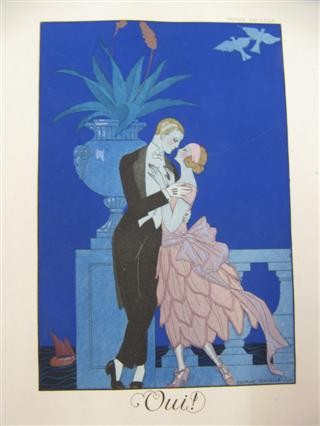Members of the Icon Painters of Brisbane & friends visited the Library Friday 4th May to view examples of pochoir printing from the ALA collections.
Pochoir printing flourished in France between 1895 and 1935 for the publication of fine art print portfolios, book illustration and limited edition journals such as Gazette du bon ton and Falbalas et Fanfreluches. Favoured subject matter for pochoir included fashion illustrations, architecture and design as well as book illustration.
Pochoir (French for stencil) is a form of colour printing using stencils. The artist prepares a gouache or watercolour image and the pochoir artisan then analyses the composition and decides on the number of stencils required to reproduce the colours. Stencils are cut by hand from zinc, copper, oiled cardboard or celluloid using a steel blade. The outline of the composition is printed mechanically and each of the colours applied by hand with brushes or pompons using the prepared stencils. This labour intensive process was completed by craftspeople working in an atelier. The final result was a hand coloured reproduction of the original composition.
The ALA collections have beautiful examples of pochoir printing in:
Gazette du bon ton: art-modes & frivolities
Modes et manieres d’aujourd’hui
Huit compositions a encadrer de Pierre Brissaud, George Lepape, Ch. Martin, A. E. Marty
Le Carrosse anx deux lezards verts / orne d’aquarelles de George Barbier
Andrew Sibley used pochoir to illustrate his artists’ book The owl and the pussycat, published by Lilly-Pilly Books, Melbourne 1988.

Comments
Your email address will not be published.
We welcome relevant, respectful comments.